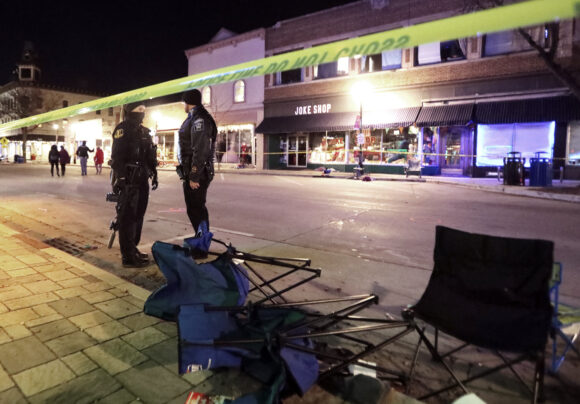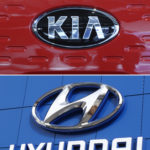Several instances involving hostile vehicles striking the public in recent years resulted in numerous deaths and injuries. Whether intentional or accidental, these cases highlight the importance of having a comprehensive security program for public spaces and events. The latest tragedy that occurred in Waukesha, Wisconsin, in November, when an SUV sped down the route of the town’s Christmas parade, led to six deaths and more than 60 injuries, and is the subject of an ongoing investigation. These heartbreaking events will likely continue to happen; however, some of the risk can be mitigated through proper security planning.
The need to protect the public when streets become venues for large gatherings has been well known for decades. This latest incident reminds many of us of a similarly tragic one in 2003 in Santa Monica, California, where an out-of-control vehicle drove for more than 1,000 feet through a crowded farmer’s market. Ten people were killed, and more than 70 were seriously injured.
One crucial recommendation from the definitive report on the incident in Santa Monica by the National Transportation Safety Board (NTSB) involved the use of effective/rigid barriers to protect crowds. Just as in Santa Monica, Waukesha used temporary plastic sawhorses to define the parade route, and had no barriers in place to prevent hostile vehicle intrusions, according to initial reports.
In concluding its report in 2003, the NTSB suggested: “Had Santa Monica installed a temporary rigid barrier system, such as bollards, at the closure limits of the Santa Monica Certified Farmers’ Market, the barrier system might have arrested or reduced the forward motion of the accident vehicle, thereby preventing it from continuing into the farmers’ market and eliminating or greatly reducing the number of casualties.”
Flimsy warning devices were not designed to stop vehicles, and therefore were not effective in protecting the crowds watching and participating during the unforeseen tragic event at the Waukesha Christmas parade. The lessons of the tragedy in 2003 along with the recommendations of the NTSB were likely not known.
A search on the internet for “hostile vehicles,” “vehicle attacks” or even “angry drivers” will yield dozens of tragic events in the United States, with hundreds of casualties. We have lessons from past incidents in Austin, Charlottesville, New Orleans, New York City, Stillwater, Oklahoma, and now from Waukesha. With so much precedent, organizers should be aware of the measures that can be put into place to protect the public better.
The development of a comprehensive security program involves several steps, all of which can be easily accomplished with planning and coordination. There are two foundational assessments that should be conducted before any event “goes live.” The first is a threat, vulnerability, and risk assessment (TVRA). Conducted by a certified assessor, a TVRA will detail the realistic threats surrounding the event based on crime analysis and significant activities during the past 12 months. It will then identify critical assets that organizers and sponsors want to protect, determine the vulnerabilities to those assets, and recommend risk mitigation measures that will “buy down” the risk.
It is important to recognize that while removing 100% of the risk from an event is usually not practically achievable, mitigating that risk to a manageable level certainly is.
Once the TVRA guidance is available for open-area events in public spaces, the next step is to conduct a vehicle vector analysis and hostile vehicle mitigation (HVM) review to identify and mitigate risks. This step will make it abundantly clear where protection is lacking at large public gatherings.
Organizers and event sponsors have a “duty of care” responsibility to the public when they plan and put on public events. The good news is that when events like Christmas parades take place, they normally use the same area of the city year after year, which allows for event planners to simply update the foundational assessments rather than needing to start from scratch each season.
When we see these types of incidents occur at events that have been taking place for many years, we often find that the stated reason for not having a comprehensive security plan is “lack of funding.” In the security profession, it is common for security measures to “hit the cutting room floor” over other expenditures that are deemed more important. Organizers, sponsors, and local municipalities should consider building security budgets into their operating expenses and to “fence off” funds for cyclic events. Thorough TVRA and HVM reports will give event planners options for low-cost/no-cost risk mitigation measures. As an example, we regularly see measures in Times Square on New Year’s Eve where large city vehicles are consistently used to close intersecting streets and reroute nearby traffic.
Creative and innovative thought during planning should be encouraged among the professionals and the many other stakeholders involved in organizing large events. These stakeholders and advisory professionals should comprise the planning committee, and will often include local law enforcement, fire and emergency services, communications teams, volunteer groups, vendors, and leaders from the community. Once this group is formed and collaborating, the plan can be brought together.
It is also important to rehearse the event with stakeholders and organizers before it takes place to work out any conflicts the planning committee might have missed. This doesn’t need the participation of every person that will be involved on the day of the event, but should include leadership from the planning committee and stakeholder community.
Lastly, there are affordable and effective measures that can and should be deployed at outdoor events. These can be permanent/reusable measures, such as removable bollards or barriers, or they can be suitable temporary barriers that might be rented or purchased.
These acts committed by hostile drivers of vehicles are anticipated to happen again, and the lessons learned from past incidents can help prevent future tragedies. By staying educated and proactively acting to secure our public spaces against the known risk of intentional or accidental vehicle intrusions, we can all work to make these terrible events a thing of the past.
About the photo: Police stand near toppled chairs lining W. Main St. in downtown Waukesha, Wis., after an SUV drove into a parade of Christmas marchers, Sunday, Nov. 21, 2021. (John Hart/Wisconsin State Journal via AP)
Was this article valuable?
Here are more articles you may enjoy.


 Indian News Agency Sues OpenAI for Copyright Violation
Indian News Agency Sues OpenAI for Copyright Violation  US Charges Five in ‘Scattered Spider’ Hacking Scheme
US Charges Five in ‘Scattered Spider’ Hacking Scheme  Swiss Re: Mitigating Flood Risk 10x More Cost Effective Than Rebuilding
Swiss Re: Mitigating Flood Risk 10x More Cost Effective Than Rebuilding  Allstate Insurers Sue Hyundai, Kia to Pay for Claims From Defective Cars
Allstate Insurers Sue Hyundai, Kia to Pay for Claims From Defective Cars 